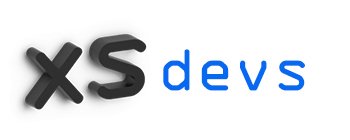CSS3, the latest version of Cascading Style Sheets, plays a vital role in web development by allowing developers to enhance the visual appeal and layout of web pages. With CSS3, web designers can create stunning and responsive websites that captivate users and provide an engaging user experience. In this article, we will explore the power and versatility of CSS3 in styling and designing web pages.
Table of Contents
- Introduction to CSS3
- The Evolution of CSS
- Key Features of CSS3
- Selectors and Specificity
- Box Model and Layout
- Typography and Fonts
- Colors and Gradients
- Transitions, Animations, and Transformations
- Flexbox and Grid
- Media Queries and Responsive Design
- CSS Frameworks
- Browser Compatibility
- CSS Preprocessors
- Conclusion
- FAQs
1. Introduction to CSS3
CSS3 is the latest iteration of the CSS standard. It provides a wide range of capabilities and enhancements that enable web designers to control the presentation and layout of web pages. CSS3 works hand in hand with HTML to separate the structure and content from the visual appearance of a website, resulting in cleaner code and easier maintenance.
2. The Evolution of CSS
CSS has evolved significantly since its inception. With each new version, CSS introduced new features and properties to meet the demands of modern web design. CSS3 represents a major leap forward in terms of design possibilities, browser support, and flexibility.
3. Key Features of CSS3
CSS3 brings a plethora of features and capabilities that empower designers to create visually stunning web pages. Some of the key features of CSS3 include:
4. Selectors and Specificity
CSS3 offers a wide range of selectors that allow developers to target specific elements on a web page. From simple element selectors to more advanced attribute selectors and pseudo-classes, CSS3 provides the flexibility to apply styles to specific elements based on various criteria. Specificity rules determine the precedence of styles when multiple rules apply to the same element.
5. Box Model and Layout
The box model is a fundamental concept in CSS that describes how elements are rendered on a web page. CSS3 provides precise control over the dimensions, padding, borders, and margins of elements. Additionally, CSS3 introduces new layout modules like Flexbox and Grid, which revolutionize the way web layouts are designed and aligned.
6. Typography and Fonts
CSS3 offers extensive typographic capabilities, allowing designers to customize fonts, sizes, line heights, and spacing. With the @font-face rule, web designers can use custom fonts on their websites, opening up endless possibilities for creative typography.
7. Colors and Gradients
CSS3 provides enhanced color options and gradients. It supports a wide range of color formats, including named colors, hexadecimal codes, RGB, HSL, and more. CSS3 gradients allow designers to create smooth transitions between two or more colors, adding depth and visual interest to web pages.
8. Transitions, Animations, and Transformations
CSS3 introduces powerful animation and transition properties that enable the creation of interactive and engaging web elements. Transitions allow for smooth state changes, while animations provide the ability to create complex, timed animations. Transformations, such as rotations, scaling, and skewing, can be applied to elements to create visually dynamic effects.
9. Flexbox and Grid
Flexbox and Grid are two layout modules introduced in CSS3 that revolutionize web design. Flexbox provides a flexible way to create responsive layouts, align elements, and distribute space within a container. Grid allows for the creation of complex, multi-dimensional layouts, making it easier to design sophisticated grid-based structures.
10. Media Queries and Responsive Design
With the proliferation of different devices and screen sizes, responsive design has become crucial in web development. CSS3 enables responsive design through media queries, which allow developers to apply different styles based on the characteristics of the device or viewport size. This ensures that websites adapt and display optimally on various devices, from mobile phones to desktops.
11. CSS Frameworks
CSS3 has paved the way for the development of CSS frameworks, which provide pre-built styles and components to streamline web development. Frameworks like Bootstrap and Foundation utilize the power of CSS3 to offer responsive grids, UI components, and styling conventions that expedite the design process.
12. Browser Compatibility
CSS3 enjoys broad support across modern web browsers. However, older browsers may not fully support all CSS3 features. To ensure compatibility, developers can use fallback options, polyfills, or employ progressive enhancement techniques to provide a consistent experience for all users.
13. CSS Preprocessors
CSS preprocessors like Sass and Less extend the capabilities of CSS3 by introducing variables, functions, mixins, and other programming concepts. These preprocessors generate optimized CSS code and provide a more efficient and maintainable way to write stylesheets.
Conclusion
CSS3 empowers web designers to create visually stunning and responsive web pages. With its rich set of features, including selectors, layout options, typography controls, animations, and responsive design capabilities, CSS3 plays a vital role in shaping the aesthetic appeal and user experience of modern websites.
FAQs
- Q: Can I use CSS3 without HTML? A: No, CSS3 is designed to work in conjunction with HTML. HTML provides the structure and content of a web page, while CSS3 is responsible for styling and presentation.
- Q: Is it necessary to learn CSS before learning CSS3? A: It is recommended to have a solid understanding of CSS fundamentals before diving into CSS3. CSS3 builds upon the foundation of CSS and introduces new features and enhancements.
- Q: Are all CSS3 features supported by all web browsers? A: Most modern web browsers support the majority of CSS3 features. However, it’s important to consider browser compatibility and provide fallback options for older browsers that may not support certain CSS3 properties.
- Q: Can I use CSS3 animations and transitions on mobile devices? A: Yes, CSS3 animations and transitions work well on mobile devices and can enhance the user experience when used judiciously. However, it’s important to consider performance implications and optimize animations for mobile devices.
- Q: Are CSS frameworks necessary for web development? A: CSS frameworks are not mandatory but can significantly speed up the web development process. They provide pre-built styles, components, and responsive grids that save time and ensure consistency across projects.

